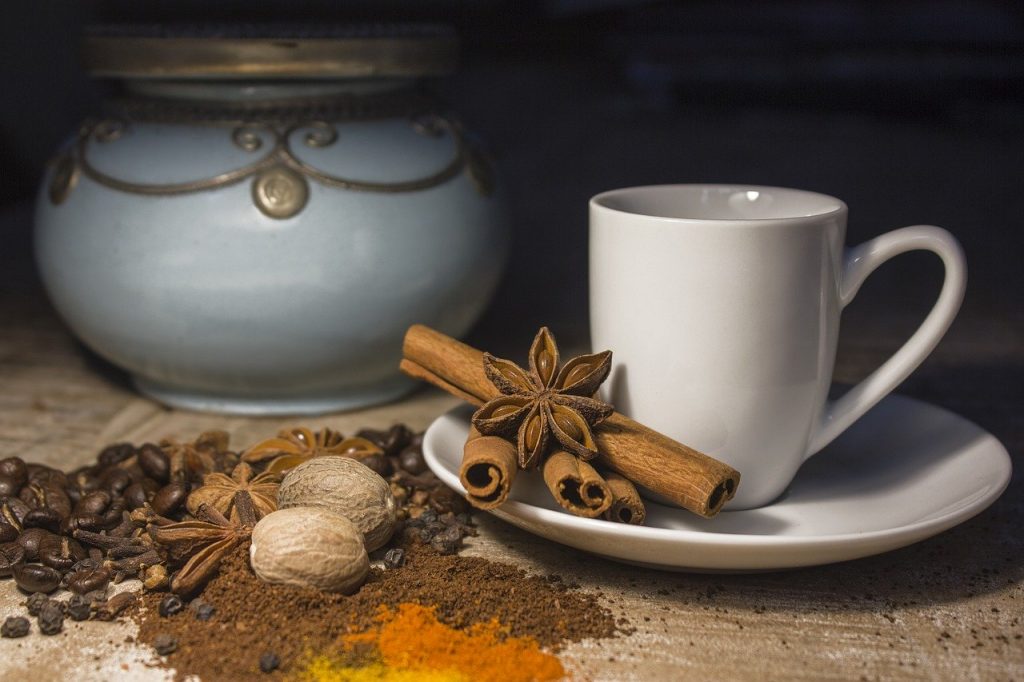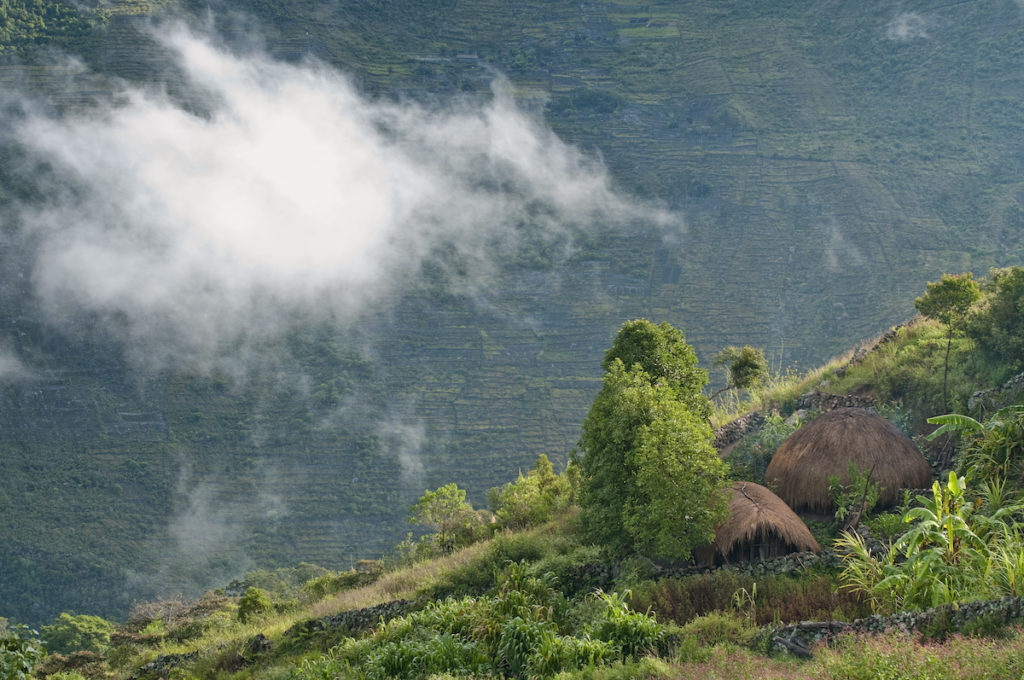Nowadays roasted coffee beans come in a dizzying array of flavors. In this case, we aren’t referring to the flavor profiles developed during the growing, processing, and roasting of coffee beans. Flavored coffee beans are created when flavoring oils are added to roasted coffee beans.
Interestingly, the history of flavored coffee goes back hundreds of years. Long ago Middle Easterners drank their coffee with hints of nuts and spices. Since the peak of the gourmet coffee craze in the 1990s, chemists have been able to develop oils in a diverse assortment of flavors. These flavoring oils are what is most commonly used to flavor roasted coffee beans.
What are the typical ingredients in these flavoring oils?
Just as you would expect, the base of these oils is some type of oil that helps the flavors stick to the coffee beans. Many larger commercial roasters use synthetic oils. However, smaller roasters offering flavored coffee beans may use something more common, such as peanut oil, as the base.
The actual flavor consists of a mixture of chemicals and natural flavors. Examples of natural flavors include vanilla, cinnamon, and cocoa beans. The ability to create such diverse flavors is due in part to the numerous chemical combinations available to create complex flavors. Coffee flavoring oils can include as many as 80 different compounds. As a comparison, most other food flavorings have an average of about ten.
Unless you have a Chemistry degree, you may not recognize most of the ingredients in flavoring oils which can be a bit worrisome. A common ingredient in flavoring oils is the solvent propylene glycol. It is a synthetic food additive that is better than water at dissolving some substances. The Food and Drug Administration considers propylene glycol as “generally recognized as safe.” Therefore, it is a common ingredient in many food products.
However, many are alarmed when they learn propylene glycol is also used in hygiene and cosmetic products. Even more worrisome is that differing quantities are also used in industrial products such as paint and antifreeze.
How Do Commercial Roasters Make Their Flavored Coffee Beans?
After roasting and degassing, these flavoring oils are added to the coffee beans. The oil is sprayed onto the roasted coffee beans while they tumble in a large mixer for an average of 15 to 30 minutes. After the beans are evenly coated, they are allowed to sit for about 30 minutes. This allows the roasted beans to absorbed the flavoring oils.
After learning some basic facts about flavored coffee beans, you may be hesitant to purchase them.
Reasons You Should Think Twice Before Purchasing Flavored Coffee Beans
1. For many commercial roasters, using flavoring oils is a profitable way to use old, stale beans.
The chemicals in these oils not only mask the dull taste of older roasted coffee beans. It also increases their shelf-life. Essentially you could be purchasing low-quality coffee beans covered in synthetic flavoring.
2. Thick oil coating on flavored coffee beans can affect your coffee grinds and grinder.
Because the roasted coffee beans used are likely older, they are less porous. They will not soak up the oils as well as freshly roasted coffee beans. As a result, roasters may use an excessive amount of flavoring oil to coat the coffee beans to ensure the flavors adhere to the beans.
The layer of oil on flavored coffee beans can affect the grinding process. The oil coating can cause the resulting grinds to be pasty and less powdery. These pasty grinds can build up over time on your grinder blades. This can affect the taste of other coffee beans you may grind in the future.
3. Flavored coffee beans can affect the brewing process as well.
The pasty consistency of the grinds can cause clogging – not allowing water to move freely through the grinds. More than likely, this results in a less than optimal tasting cup of coffee.
4. When using higher quality coffee beans, flavoring oils can overpower its distinct natural flavors.
Many coffee aficionados find adding these oils wastes the efforts invested in the growing, processing, and roasting of high-quality coffee beans.
5. As previously mentioned, coffee flavoring oils commonly use propylene glycol.
The FDA approved small quantities of propylene glycol to be safe. However, in larger quantities, it can have adverse effects on those with compromised health. Unfortunately, when used as a solvent (as is the case with flavoring oils), it may not be listed as an ingredient on the food packaging.
More commonly, propylene glycol is known to be a skin and eye irritant. When dealing with this ingredient in large quantities in the manufacturing of flavoring oils, it can pose a health risk for workers.
6. The flavoring oils can affect your coffee’s aftertaste.
Many have found that coffee brewed using flavored coffee beans leaves what has been described as a metallic and bitter aftertaste. This is thought to be a result of the chemicals used to flavor coffee beans.

If you are looking for natural alternatives to add a hint of flavor to your freshly roasted coffee beans, you can do so using whole spices including vanilla beans, cinnamon sticks, and cocoa beans. Store freshly roasted coffee beans in a storage container with your chosen whole spice. The longer you let it sit the stronger the flavor will be. For example, split vanilla beans in half and mix with freshly roasted beans. Store in a sealed container and allow to sit for at least 24 hours after degassing.
However, to protect the pure taste of high-quality coffee beans, we recommend you start by trying different varieties to find your preferred flavor profile. The Coffee Taster’s Flavor Wheel, developed by World Coffee Research (WCR) and the Specialty Coffee Association of America (SCAA), is a great tool to help articulate your coffee flavor preferences.
Contact us, and our coffee professionals can help you select coffee beans that fit your preferences. They can direct you to green coffee bean varieties you can roast at home.
View our Ultimate Guide to Home Roasting Coffee Beans to learn more about the roasting process. You can learn how to control some of the resulting flavors in your roasted coffee beans.



